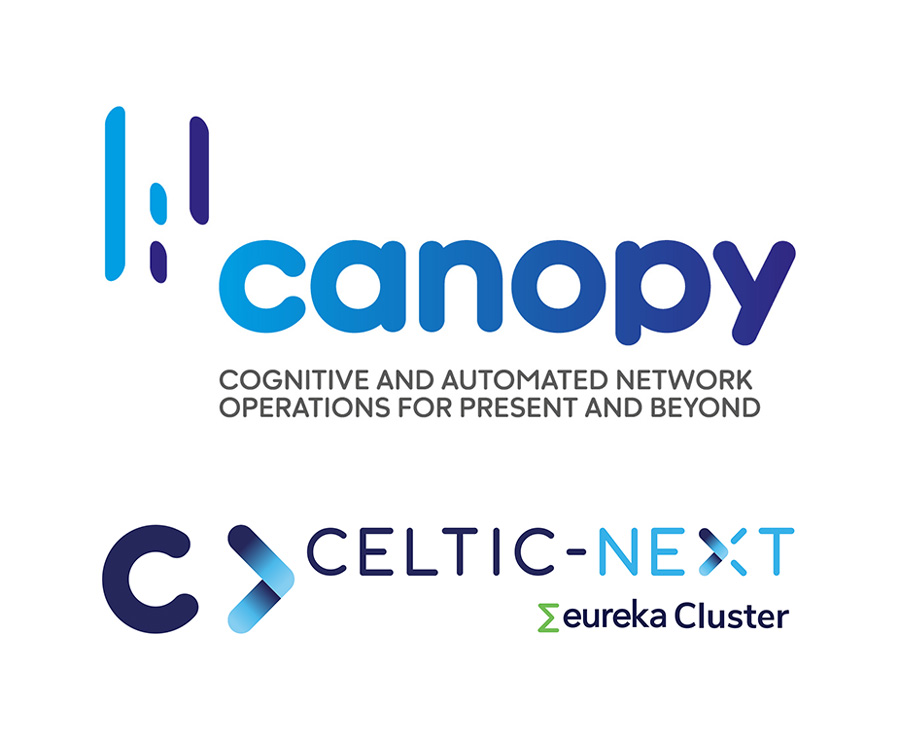CANOPY
Cognitive and Automated Network Operations for Present and Beyond
Celtic-Next: Project CANOPY

The digitalisation of modern society has surged over the past decade, supported by the democratization of internet access, notably through mobile networks. More recently, the deployment of 5G will support evolved used cases and unprecedented quality of service, focusing on three areas: URLLC, MMTC, and EMB. As the network connectivity keeps expanding, enterprises and individuals increasingly rely on the internet to manage social media and personal life applications, along with digital business platforms that ensure remote working and business support. As new emerging applications scale up, such as autonomous vehicles, digital healthcare, online education, IoT, smart cities, and safety-critical networks, the challenge of providing high network availability at a sustainable cost will be the key critical success factor for MNOs.
This stringent context has fostered the development of a new research paradigm for present and future wireless networks, which aims at implementing a preventive network operations approach, named Smart Operations. The CANOPY is an example of such research initiatives, that aims at collaborating with industry and academy partners to develop AI models that can help MNOs in the path to transform the traditional reactive mode paradigm, where problem analysis and troubleshooting only starts after a service degradation has been reported, thus leading to high MTTR, low service availability and increased customer complaints. Moving forward, the vision is implementing automated data analysis using AI across several network functions.
Smart Operations in mobile networks comprise different applications where network data and AI are used to increase the efficiency of network operations, delivering higher QoE levels to users, whilst reducing network operational costs. The objective is using AI to set up pre-emptive actions to avoid customers being impacted, notably by detecting different performance degradations, implementing predictive fault detection, self-healing actions, and active energy efficiency management. An example of these applications is on predicting the occurrence of network alarms relying on PM and FM data, hence creating. A smart NOC that can predict the occurrence of severe alarms with sufficient lead time opens the opportunity to implement contingency actions, whose effectiveness will depend on the anticipation time window achieved in the prediction. Another objective is the implementation of automated root-cause analysis using AI models that can track the key explainable factors that are responsible for the occurrence of network faults or KPI degradation. In parallel, an automated ticketing system, also relying on AI models, will identify BSs where a fault has been detected, generating a full lifecycle observation of the problem. Finally, to close the loop, self-regenerating healing algorithms are meant to propose corrective actions which can be validated by humans, setting a COBOT approach.
Since January 2022, CELFINET, a Cyient Company, has been leading an international consortium joining industry and academy partners from Portugal and Germany, developing innovative research work. During this period, the joint collaboration has created valuable outcomes that are envisaged to be applied by the involved institutions in their respective areas of activity. Hereafter, a summary of some of the most notable achievements is provided:
• Creation of an open dataset from a live 4G network with approximately 1 year of PM, FM, and CM data;
• Development of 5 AI models that address use cases in the field of smart operations;
• Submission of 4 conference papers and 1 journal paper underway, focusing the following fields: Smart Trouble Ticket Management, Smart Predictive Fault Management, Smart Root Cause Analysis, Spatial graphs for mobile networks and Energy efficiency;
• Development of a demonstration portal, providing interactive forms of visualizations of all the model’s functionalities.